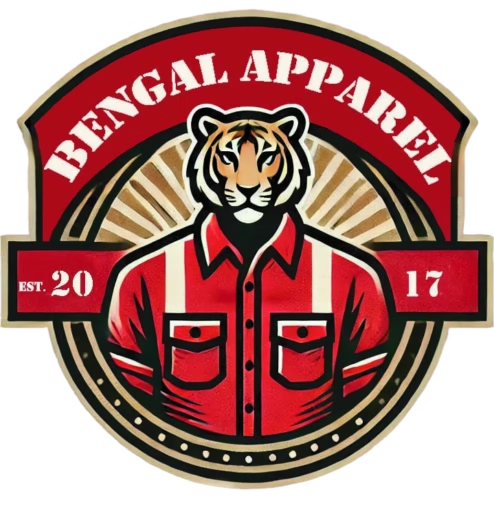Choosing the right partner for custom nurse uniform manufacture in Bangladesh can completely change how your healthcare brand looks and operates. Bangladesh has become one of the top global hubs for uniform and workwear production. The country combines high quality, low production costs, and flexible customization — making it a smart choice for hospitals, clinics, and healthcare distributors.
In this guide, you’ll learn everything you need to know: how Bangladesh leads the market, which fabrics and designs work best, how the production process runs, and what to check before placing an order.
Why Bangladesh Leads in Nurse Uniform Manufacturing
Bangladesh is now the world’s second-largest garment exporter. Over the past two decades, its factories have earned the trust of global brands by offering consistent quality and strong compliance. When it comes to custom nurse uniform manufacture in Bangladesh, here’s why so many international buyers choose it:
1. Affordable Production Costs
Manufacturing in Bangladesh costs less than in most Western or Middle Eastern countries. Lower labor and overhead expenses allow factories to offer competitive prices — without cutting corners on fabric or stitching quality.
2. Skilled and Experienced Workforce
Bangladesh’s garment workers are highly trained in stitching, pattern making, and finishing. Many have years of experience producing uniforms and medical apparel for well-known international buyers.
3. High Production Capacity
From small sample runs to bulk orders of tens of thousands of uniforms, Bangladeshi factories can easily scale production. This flexibility helps buyers handle pilot projects, tenders, or long-term supply contracts.
4. Certified and Compliant Production
Reputed factories hold ISO 9001 for quality management and BSCI or SEDEX for social compliance. These certifications guarantee ethical labor, safety standards, and consistent output.
5. Reliable Fabric Supply
Bangladesh has access to both local textile mills and imported specialty materials. Whether you need 100% cotton, polyester blends, or antimicrobial stretch knits, factories can source fabrics quickly — reducing your lead time.
6. Proven Experience with Medical Apparel
Many manufacturers already produce scrubs, lab coats, and hospital uniforms for the U.S. and European markets. They understand the hygiene, comfort, and durability requirements that healthcare garments demand.
Key Features of High-Quality Custom Nurse Uniforms
A nurse uniform must feel comfortable, look professional, and last through frequent washing. Below are the main features to focus on when ordering custom nurse uniform manufacture in Bangladesh.
Fabric Choices
The right fabric sets the tone for comfort and performance.
Cotton Twill: Soft, breathable, and suitable for warm climates.
Poly-Cotton Blends: Durable, wrinkle-resistant, and easy to care for.
Stretch Knit Fabrics: Add flexibility and improve movement during long shifts.
Design and Fit
Nurses need to move freely while maintaining a neat appearance.
Neck Styles: V-neck, round neck, or mandarin collar.
Sleeves: Short for tropical climates, long for cooler environments.
Pants: Straight-leg, cargo pockets, or drawstring waist for comfort
Functional Details
Practical design makes daily work easier.
Multiple Pockets: Chest, side, and pen pockets keep tools close.
Closures: Buttons, snaps, or zippers make dressing convenient.
Reinforced Stitching: Adds strength to high-stress areas.
Customization Options
Make your uniforms unique to your hospital or clinic.
Logo Embroidery: Add hospital or department logos.
Color Blocking: Use contrasting panels for a modern look.
Name Labels: Personalized tags or ID badge holders.
Safety and Hygiene
Hospitals need uniforms that protect staff and meet hygiene standards.
Antimicrobial Finishes: Prevent bacteria and odor buildup.
Flame-Resistant Coatings: Optional for high-risk departments.
Easy-Care Fabrics: Machine washable at high temperatures.

Step-by-Step Manufacturing Process
Understanding how nurse uniforms are made helps you set realistic timelines and expectations. Here’s how custom nurse uniform manufacture in Bangladesh usually works.
1. Consultation and Design
The process starts with a meeting to gather requirements — fabric type, color codes, logo artwork, and quantity. Designers then prepare digital sketches and send a sample for your approval. You can request adjustments before production begins.
2. Pattern Making and Grading
Once designs are finalized, pattern makers create templates for each size. With CAD (Computer-Aided Design) systems, patterns are graded precisely to maintain the same fit from XS to XXL.
3. Fabric Procurement
Factories source fabrics from local mills or import specialty ones. Before cutting, every fabric lot is tested for colorfastness, shrinkage, and tear strength to ensure it meets your quality standards.
4. Cutting
Large cutting tables or automatic cutters slice multiple fabric layers at once. Afterward, technicians manually inspect each piece to ensure measurements are accurate.
5. Sewing and Assembly
Sewing lines handle stitching in a systematic flow. Specialized operators attach pockets, zippers, and trims. Stress points like cuffs and seams are double-stitched for durability.
6. Quality Control
In-line inspectors monitor every stage. After sewing, each uniform undergoes a final inspection for measurements, loose threads, and overall finish. Many factories also run wash tests to confirm fabric stability.
7. Packing and Shipping
Once approved, uniforms are pressed, folded, and packed in polybags. Cartons are labeled by style, color, and size. Depending on the buyer’s choice, goods are shipped FOB, CIF, or DDP via sea or air freight.
Quality Assurance and Certifications
When choosing a factory for custom nurse uniform manufacture in Bangladesh, check for recognized certifications:
ISO 9001: Ensures strict quality control.
BSCI / SEDEX: Confirms ethical and social compliance.
OEKO-TEX Standard 100: Guarantees fabrics are free from harmful chemicals.
Healthcare Compliance: Experience with FDA or EU standards for medical textiles.
Always ask for recent audit reports or copies of these certificates to verify the factory’s credibility.
Cost Breakdown and Price Insights
Pricing varies depending on materials, design complexity, and order volume. Here are the main factors that influence cost:
Order Quantity: Larger orders reduce the per-unit price.
Fabric Type: Antimicrobial or stretch fabrics cost more than standard blends.
Design Details: More pockets, trims, or embroidery add to labor time.
Customization: Logo placement and color matching slightly increase costs.
Packaging & Shipping: Premium packing and air freight raise total expenses.
Average Price Range:
Standard poly-cotton scrub sets (bulk 5,000 + units): US $5 – 7 per set
Premium or customized sets: US $10 – 15 per set
These estimates may vary by season, fabric availability, and global freight costs.
Lead Time and Delivery Schedule
Timelines for custom nurse uniform manufacture in Bangladesh generally follow this pattern:
Sample Development: 2 – 4 weeks
Bulk Production: 4 – 6 weeks after PP sample approval
Shipping: 4 – 5 weeks by sea, 7 – 10 days by air
Factories can fast-track urgent projects, but air freight should be reserved for tight deadlines due to higher costs.
Sustainability and Ethical Manufacturing
Bangladesh’s apparel sector is becoming greener and more responsible. Many uniform factories now focus on eco-friendly and socially aware production.
Recycled Fabrics: Increasing use of recycled polyester and organic cotton.
Water-Saving Dyeing: New processes cut water and energy use by up to 40%.
Waste Recycling: Fabric scraps turned into accessories or insulation.
Worker Welfare: Programs that support education, healthcare, and housing.
Partnering with a sustainable manufacturer strengthens your brand’s image and aligns with global ESG goals.
How to Choose the Right Manufacturer
Finding a dependable partner is key. Use this checklist before finalizing your supplier in Bangladesh:
Check Audit Reports – Review social and environmental compliance documents.
Evaluate Sample Quality – Inspect fabric texture, stitching, and measurements.
Communication – Ensure clear, responsive English communication.
Payment Terms – Standard is 30% deposit and 70% after inspection or shipment.
Attending trade shows or requesting video factory tours can also help verify capabilities.
Tips for a Smooth Collaboration
Working efficiently with your manufacturing partner saves time and avoids costly errors.
Provide Clear Specifications: Include Pantone colors, GSM, and logo artwork in vector format.
Define Tolerances: Agree on acceptable size and color variations.
Get Weekly Updates: Track progress through emails or virtual meetings.
Build in Extra Time: Account for potential delays in fabric or shipping.
Inspect Before Shipment: Consider a third-party quality inspection for large orders.
Consistent communication is the key to success in international apparel manufacturing.
Conclusion
Bangladesh stands out as one of the most reliable destinations for custom nurse uniform manufacture in Bangladesh. With its skilled labor, strong compliance, and competitive pricing, the country delivers excellent value for hospitals and healthcare distributors around the world.
By understanding fabrics, production steps, quality standards, and sustainability efforts, you can confidently source professional, comfortable, and durable nurse uniforms that strengthen your brand image and meet international standards.
Ready to Get Started?
Partner with a trusted uniform manufacturer in Bangladesh.
Bengal Apparel BD provides full-service solutions — from design to shipment — for hospitals and healthcare suppliers worldwide.
📩 Contact us today: hello@bengalapparel-bd.com
🌐 Visit: www.bengalapparel-bd.com
Request samples or get a detailed quotation for your next custom nurse uniform order.




